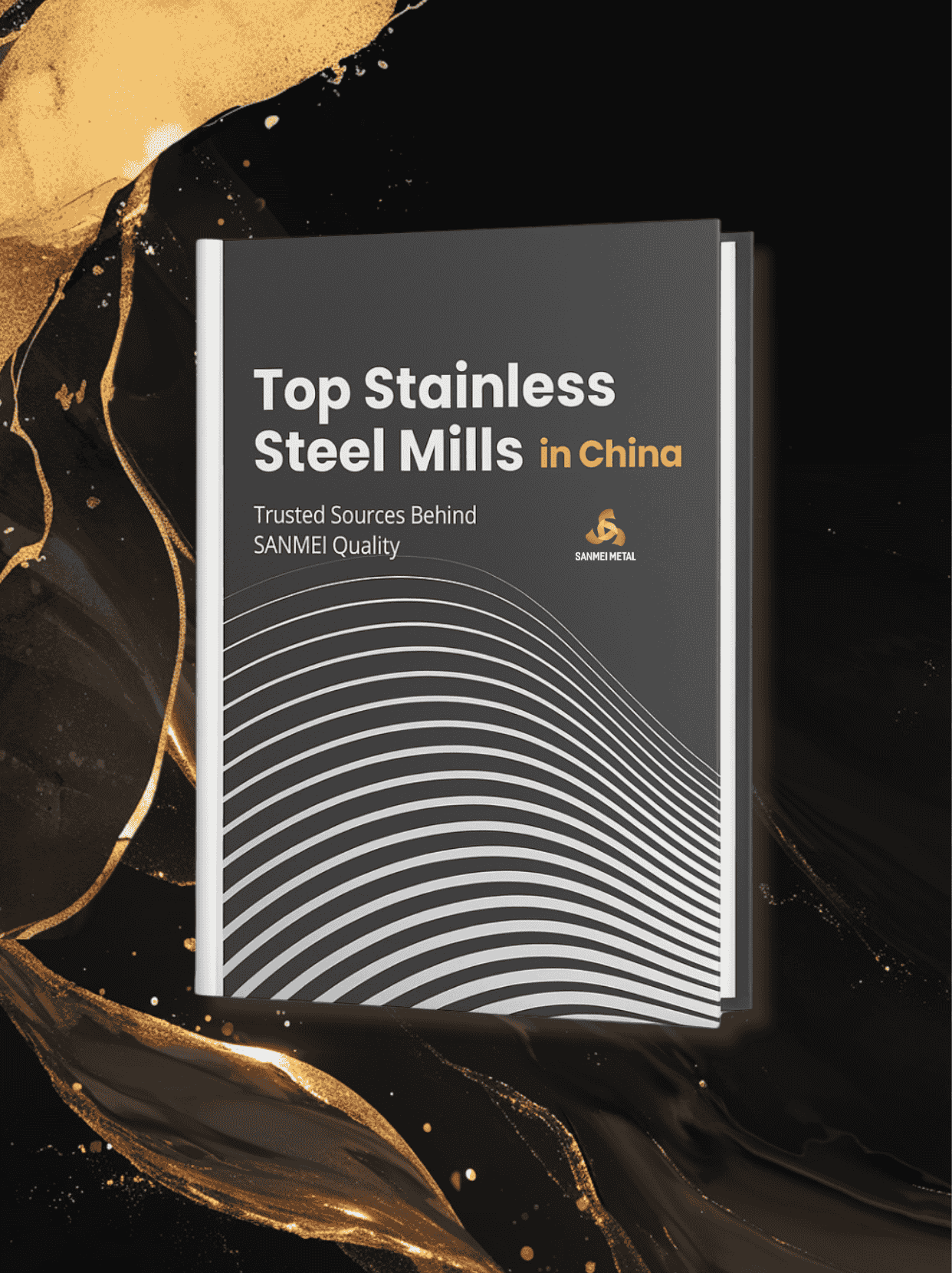Çin'de 201 Paslanmaz Çelik Nedir? J1, J2, J3 ve J4'e İlişkin Eksiksiz Bir Kılavuz
201 paslanmaz çelik Özellikle orta düzeyde korozyon direnci ve mukavemet gerektiren uygulamalar için 304 paslanmaz çeliğe uygun maliyetli bir alternatif olarak dünya çapında bilinmektedir. Ancak Çin201 sınıfı ayrıca dört ana alt tipe ayrılır: J1, J2, J3 ve J4Bu iç farklılıklar, 201 paslanmaz çeliğin Çin pazarındaki gerçek performansını ve fiyatını anlamak için önemlidir. Bu kılavuz, Çin'deki 201 paslanmaz çelik hakkında bilmeniz gereken her şeyi size anlatacaktır.

Çin Neden 201 Paslanmaz Çeliği J1, J2, J3 ve J4 Olarak Sınıflandırıyor?
1990'ların sonları ve 2000'lerin başlarında, küresel nikel fiyatı hızla yükseldi ve 304 gibi geleneksel yüksek nikelli paslanmaz çelikler önemli ölçüde daha pahalı hale geldi. Buna karşılık, Çinli çelik üreticileri daha yüksek manganez ve azot içerikli düşük nikelli alternatifler geliştirdiler ve bu da 200 serisinin, özellikle de 201 serisinin yükselişine yol açtı.
Farklı sektörlerden gelen artan talebi karşılamak ve maliyet ile performansı dengelemek için Çinli üreticiler, 201'i alt sınıflara ayırdı: J1, J2, J3 ve J4. Her varyasyonun kendine özgü bir kimyasal yapısı ve belirli uygulamaları vardır.
Çin 201 Paslanmaz Çelik Sınıflarının Kimyasal Bileşimi
Seviye | C | Hayır | Cr | Mn | Cu | Si | P | S | N | Ay |
201 J1 | 0.104 | 1.21 | 13.92 | 10.07 | 0.81 | 0.41 | 0.036 | 0.003 | 0.80-1.50 |
|
201 J2 | 0.128 | 1.37 | 13.29 | 9.57 | 0.33 | 0.49 | 0.045 | 0.001 | 0.155 |
|
201 J3 | 0.127 | 1.3 | 14.5 | 9.05 | 0.59 | 0.41 | 0.039 | 0.002 | 0.177 | 0.02 |
201 J4 | 0.06 | 1.27 | 14.86 | 9.33 | 1.57 | 0.39 | 0.036 | 0.002 |
|
|
J1, J2, J3, J4 Sınıflarının Karşılaştırılması
Seviye | Temel Özellikler | Tipik Uygulamalar | Notlar |
J1 | Orta bakır, dengeli şekillendirme | Dekoratif paneller, lavabolar, banyo armatürleri | Hem sığ hem de orta derinlikte çekme için uygundur |
J2 | En yüksek karbonlu, çok sert | Dekoratif borular, düz yüzeyler | Sert ama kırılgandır - bükülmekten kaçının |
J3 | Düşük bakır, uygun maliyetli | Mobilya, mekanik çerçeveler, teşhir rafları | Temel şekillendirilebilirlik ve iç mekan uygulamaları için uygundur |
J4 | En yüksek bakır, en iyi korozyon | Mutfak eşyaları, lavabolar, otomobil parçaları | Yüksek şekillendirme talepleri için ideal, J1-J3'ten daha iyi |
Bu Notları Anlamanın Önemi
Çin'den paslanmaz çelik tedarik ediyorsanız, sadece "201" demek yeterli değildir. Performans, fiyat ve işleme kabiliyetleri J serisi tipler arasında önemli ölçüde farklılık gösterir. Örneğin:
- Bir lavabo için J4 yerine J2 sipariş etmek, üretim sırasında çatlamalara neden olabilir.
- J1, mutfak gibi nem oranının yüksek olduğu ortamlarda J4'e göre daha iyi performans göstermeyebilir.
- J3 ekonomiktir ancak karmaşık şekillendirme veya dış mekan kullanımı için uygun değildir.
Çin'de 201 Paslanmaz Çelik Hakkında SSS
201 paslanmaz çelik gıda açısından güvenli ve sağlam mıdır?
Evet, 201 paslanmaz çelik, özellikle iç mekanlarda, hafif koşullarda gıda ile temas için genellikle güvenlidir. Ancak, nikel içeriğinin düşük ve manganez içeriğinin yüksek olması nedeniyle tuzlu veya asidik ortamlarda korozyona karşı daha az dirençlidir. Mutfak lavaboları veya ev eşyaları için J4 sınıfı daha iyi bir seçenektir.
201 paslanmaz çelik iyi midir?
Evet, 201 paslanmaz çelik iyi mukavemete ve orta düzeyde korozyon direncine sahip, uygun maliyetli bir malzemedir. Dekoratif panellerde, lavabolarda ve hafif yapılarda yaygın olarak kullanılır. 304 kadar dayanıklı olmasa da, agresif olmayan ortamlar için pratik bir seçimdir.
201 paslanmaz çelik manyetik midir?
201 paslanmaz çelik, özellikle soğuk işleme sonrasında zayıf manyetik özelliğe sahiptir. Tavlanmış halde manyetik olmayabilir, ancak işleme sırasında oluşan deformasyon (haddeleme veya bükme gibi) martensit oluşumu nedeniyle manyetik özelliklerini artırır.
201 paslanmaz çelik paslanmaz mıdır?
Hayır, 201 paslanmaz çelik paslanmaz değildir, ancak düşük korozyonlu ortamlarda paslanmaya karşı dirençlidir. J1 ve J4 gibi kaliteler, iç mekanlarda veya kuru iklimlerde daha iyi performans gösterir. Deniz veya kimyasal ortamlarda daha iyi korozyon koruması için 304 veya 316 önerilir.
201 paslanmaz çelik nerelerde kullanılır?
201 paslanmaz çelik genellikle mutfak eşyalarında, lavabolarda, dekoratif panellerde, mobilya çerçevelerinde ve otomotiv kaplamalarında kullanılır. Uygun fiyatı ve orta düzeyde korozyon direnci, özellikle J serisi sınıfların yaygın olarak kullanıldığı Çin'de iç mekan ve dekoratif uygulamalar için idealdir.
Çözüm
Çin'de 201 paslanmaz çeliğin iç sınıflandırmasını anlamak, bölgede paslanmaz çelik ürünleri tedarik eden, tasarlayan veya üreten herkes için önemlidir. J1, J2, J3 ve J4 olmak üzere her sınıf, maliyet, şekillendirilebilirlik ve korozyon direnci açısından farklı bir denge sunar. Doğru türü seçerek ürün performansını iyileştirebilir, üretim sorunlarını azaltabilir ve maliyet verimliliğini sağlayabilirsiniz.
Paslanmaz çelik seçimi hakkında daha fazla bilgi için lütfen bizimle iletişime geçmekten çekinmeyin. temas etmek bilgili satış temsilcilerimizden biri.








